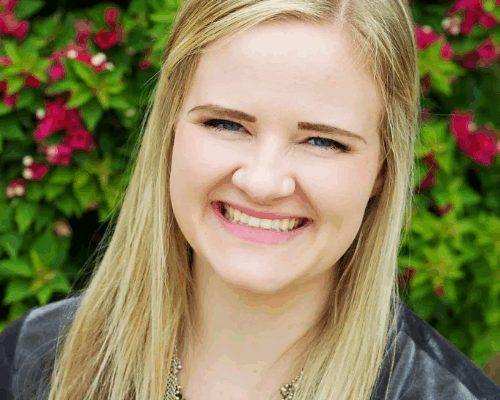
A “character arc” is how a character grows throughout a story. While your protagonist may have a fun personality, a cool skill, or a striking appearance, his arc is arguably his most important feature. But not all arcs are the same, and not all writing advice will apply to every arc. When you have a clear idea of your protagonist’s type of arc, you will have a clearer idea of how to shape their story.
Types of Character Arcs
Many writers approach this differently, but the most useful way is to view an arc as the character’s internal journey. At the most basic level, there are only two ways a character can internally grow:
- By changing
- By increasing his resolve (remaining steadfast)
There are two types of each:
- Positive
- Negative
Innately, any internal journey taps into or demonstrates a belief system. That’s what internal growth is about—beliefs, values, and worldviews.
For example, in A Christmas Carol, Scrooge starts out valuing wealth above all else. Throughout the story, he changes so he values charity over wealth. His belief system flipped.
In a positive arc, the character will end with what we may consider a true or moral worldview (like Scrooge). In a negative arc, the character will end with what we may consider an untrue or immoral worldview.
There are four types of character arcs—positive change, negative change, positive resolve, and negative resolve.
Now, consider your protagonist. What worldview does he or she believe in, or at least demonstrate, at the beginning of the story? What about the end of the story?
If your character has a 180-degree flip in belief systems, they are having a change arc.
If your character ultimately keeps the same belief system, they are having a steadfast arc.
Is their ending worldview true or moral? If so, it’s likely positive. If not, it’s likely negative.
What does this mean for your writing? Let’s go over each type in more detail so you can gain insight on how to shape your story.
Positive Change
This protagonist usually starts the story with an improper worldview. This is sometimes called the “weakness,” “flaw,” or “misbelief.” Often, this flaw came from a traumatic—or at least significant—past event. As the protagonist engages in the main conflict, obstacles will steadily reveal to him that this weakness is holding him back. Antagonistic forces should push the character to confront his flaw until ultimately, he must forsake it and embrace a better worldview.
For example, in The Greatest Showman, P. T. Barnum believes he needs the world to accept him—a misbelief that stems from how he was treated as a child, particularly by Charity’s father. As he strives to make a name for himself, he encounters obstacles. His obsession with becoming someone important leads to major setbacks in his personal and professional life. To make everything right again, P. T. must let go of his old worldview and embrace a better one—that you don’t need everyone to accept you, only those closest to you. This paves his way to success.
More examples: Joy in Inside Out, Scrooge in A Christmas Carol
Quick tip: When your protagonist acts on his misbelief, it should increase his problems through the story’s middle.
Negative Change
This protagonist starts the story with a true or moral worldview. As she engages in the main conflict, obstacles will lead her to question the validity of her original beliefs. Antagonistic forces will tempt or pressure her to go astray. There is something she greatly wants, and she thinks she needs to give up her original values to get it. In the end, she will reject what she first believed and embrace, then use, an improper worldview to try to claim victory. This ultimately leads to self-damnation.
For example, in Revenge of the Sith, Anakin Skywalker starts the story believing in and upholding the light side of the Force, but his thirst for greatness, and above all, his fear of loss leads him toward the dark side. To be a true Jedi, he must be humble and accept loss, but instead he is so driven to save Padme that he turns his back on the Jedi ways and ultimately becomes morally corrupt.
More examples: Light in Death Note, Winston in 1984
Quick tip: As your protagonist pursues what she wants at all costs, show how this creates destruction to the environment and people around her.
Positive Resolve
This protagonist already has a true or moral worldview. During the rising action, obstacles will test her dedication to her beliefs. Antagonistic forces will try to weaken her resolve, confuse her, or lead her astray. She may or may not question her beliefs through the middle of the story, but at the end, she ultimately holds true to who she is and what she believed in the beginning. She may suffer a high cost, but it will be worth the internal victory of standing up for what is right.
In Wonder Woman, Diana says we should fight for the world we believe in. Even though the atrocities of war test her worldview and Ares tempts her to embrace a different one, she ultimately upholds her initial belief. While she struggles and wavers through the middle, at the end, she holds fast to who she was in the beginning.
More examples: Mulder in The X-Files, Elle Woods in Legally Blonde
Quick tip: Follow the adage “No good deed goes unpunished”—make it difficult, painful, and costly for the protagonist to uphold what’s right.
Negative Resolve
This protagonist has an improper worldview. During the rising action, obstacles may highlight his flaw while opportunities will offer him a “high road.” He will have his resolve tested as he is encouraged to change for the better. He may or may not attempt to change through the middle, but at the end, he ultimately holds stubbornly to his initial ways. He will reject the high road and sink deeper into his misbeliefs.
In Cruella, Estella starts as misbehaved and vengeful. She may “try” to be “good,” but inside, she wants to be bad. She befriends two orphans who later give her the opportunity to work an honest job in the fashion industry, but instead, she embraces her cruel ways. Despite Jasper trying to convince her to change, Estella chooses to become even more immoral as Cruella.
More examples: Coriolanus in A Ballad of Songbirds and Snakes
Quick tip: Emphasize how the character refuses to change by showing him reject a promising opportunity for something better.
With these four basic arcs in mind, you’ll have a good foundation for shaping your protagonist’s story.

September C. Fawkes
Sometimes September C. Fawkes scares people with her enthusiasm for writing. She has worked in the fiction-writing industry for over ten years and has edited for both award-winning and best-selling authors, as well as beginning writers. She runs a writing tip blog at SeptemberCFawkes.com (subscribe to get a free copy of her booklet Core Principles of Crafting Protagonists) and has served as a writing coach on Writers Helping Writers. When not editing and instructing, she’s penning her own stories. Some may say she needs to get a social life. It’d be easier if her fictional one wasn’t so interesting.




Leave a Reply